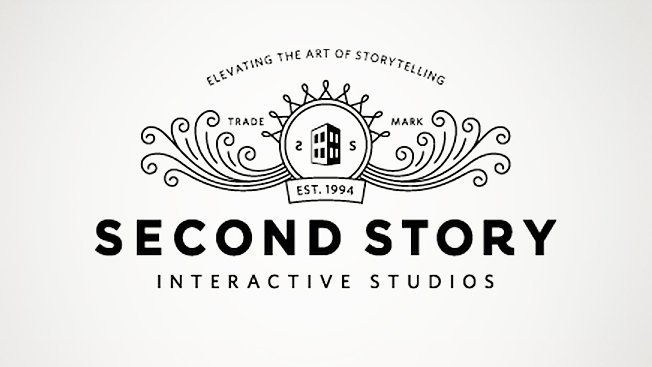AAU’s DesignSpeaks series brought Julie Beeler and Daniel Meyers of Second Story design studio to Morgan Auditorium Thursday night for an interesting and enthusiastic talk on their interactive design work. The talk, like the Second Story studio, brought together an audience from a wide variety of departments and media.
That was actually one of the unique and interesting aspects of Second Story’s … well, story. They specialize in interaction design, which involves quite a lot of digital new media and coding, but their backgrounds and expertise varied widely. Daniel Meyers introduced himself and mentioned his background of a degree in architecture as well as, surprisingly enough, Medieval literature. Julie mentioned in one story that one of the developers was nerding out about how to make a project really cool, and said that the coding details were all Greek to her but it sounded good. She elaborated that she had known the basics of html when it was beginning, but it was not her specialty. And she highlighted how it wasn’t just Daniel and herself that had different backgrounds; the whole studio pulled on a wide range of expertise and knowledge of mediums to bring their projects together.
And this was some of the advice they had for students—specialize in something, make it your own, but also know where the gaps in your knowledge lie and use that as an opportunity to partner and collaborate with someone who does know. Daniel said that the edge of your knowledge was where the exploration lay, and they both emphasized that being able to come up with a creative solution involved a range of skill. For them, that often involved innovative technologies that were for many people cutting edge.
They emphasized however that the tool should never get in the way of the experience. The experience should be completely about what is happening for the visitor, and not so much about how it is happening. And they pointed out their talk as a perfect example of that—the computer and projector were an essential medium to display the content of their presentation, but the talk was inherently about the connection between Julie and Daniel as speakers and us as the audience, not about the computer.
Despite being only a tool to an end, their slide show presentation went above and beyond the usual capabilities of a digital presentation. At the beginning of their lecture they put a bit.ly url up on the screen and directed everyone with a smart phone to please access the site. Anyone who did found themselves on a page with a ring that could be dragged around the phone’s screen, and connected to a data visualization displayed on the projected slideshow. So effectively, the audience could draw and doodle on the slides in real time while the presentation was happening. It lit up the top of the slides with orange squares, yellow lines, and other abstract and visually pleasing simple graphics, and stayed at the top of every slide for the entire presentation. A very simple way to let the audience create and participate in what would otherwise have been only a passive information-consumption experience.
They talked about how important it was to affect the visitor emotionally, or as Julie put it “Hit someone in the heart rather than the head.” They wanted to connect, to make a difference, to inspire the imagination of the viewer. And their enthusiasm was contagious. Julie said that she believed that you could only be truly successful if you were enthusiastic about your work, because that was the only way to create enthusiasm for the visitor.
Ultimately, they love the interactive experience for how it connects people. Julie said that some people feel that technology is isolating, but that she deeply believes it has the ability to connect people. She mentioned a project they did for Ted Talks, and said the best part about it was when the technology inspired so much conversation that the technology itself was abandoned in favor of the human interaction it had initiated.
For Second Story the human element is obviously the reason for existence—every project they do is an attempt to add meaning, to educate, to add joy and play and discovery and imagination and inspiration to the lives of all those who experience their interaction design.
A few challenges they had for the audience in terms of how to think about design (and to help explain what they do and how they think):
- How can you make an infographic that has a long life span, that won’t become obsolete?
- How can you integrate media with space; how can you break the assumption that digital media has to operate on a two-dimensional frame?
- How can you utilize technology that people already have with them, such as smart phones, to enhance their experience of their environment?
- How can you focus on creating a complete story rather than simply surrounding a visitor with media (“the sports bar affect”: having screens everywhere)?
- Can you value and utilize the idea of sequencing in any medium that you work in?
- How can you engage the imagination through the senses?
- How do you make ideas that last, even in the somewhat ephemeral and constantly changing world of digital media?
- How can you design intuitive maps, of either space or time?
- How can you make abstract information more understandable and accessible to the general public?
And two last pieces of advice:
Be self taught, be driven, and immerse yourself in your field. Push yourself to where you want to be.
There will be times when you are discouraged or unhappy with your work, but as long as you care most about having a good final product, you can get through it successfully.



